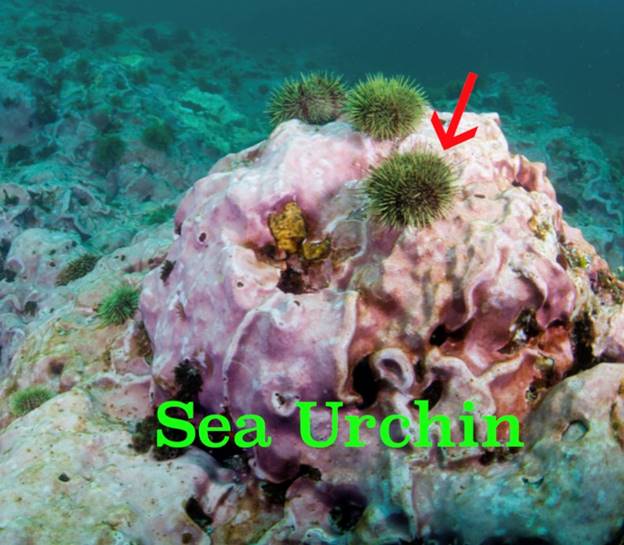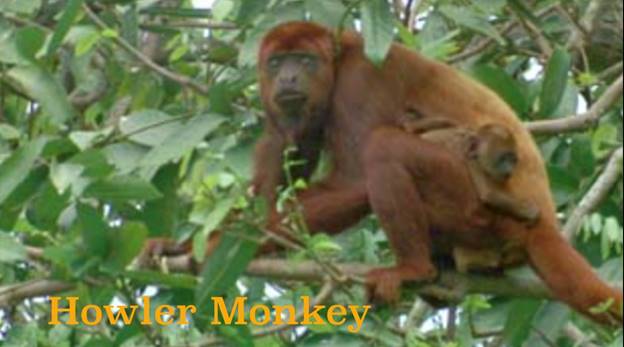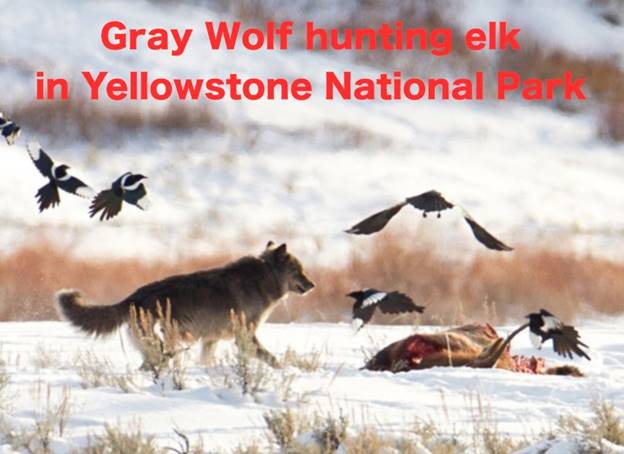Keystone Species and the Ecosystem
By Dr Khalid Siddiqui
Ohio

It was once thought that the ecosystem is organized either from the bottom up (meaning any change in the very lowest link in the food chain will disrupt the whole ecosystem) or top down (meaning it is a predator-driven system in which the predator controls the system). But newer studies have shown that an animal at any certain level in a particular environment could take the lead in balancing the whole ecosystem. That animal has been labeled as the Keystone species for that particular environment. In other words, different animals at different levels of the food chain are the keystone species in different environments. Here are some examples:
* Washington state: There are many tide pools in the Olympic peninsula of Washington state in the USA. These tide pools are formed in depressions along the shoreline of the rocky coasts. The pools are filled with seawater that gets trapped as the tide recedes. It is packed with active sea life such as snails, barnacles, mussels, anemones, urchins, sea stars (formerly known as starfish), crustaceans, seaweed, and small fish. Every wave, during the high tide, delivers fresh nutrients and microscopic organisms such as plankton to the tide pool. The plankton nourishes the smallest animals, which, in turn, sustain the larger ones. Everything is in perfect balance. In one experiment, the sea stars were removed from one of the tide pools. Within a few years the whole pool was filled with mussels only, at the expense of all the other animals. It appeared that the sea star was keeping the numbers of mussels in check. When the sea star was removed, the mussel’s population went out of control and it ate every other animal in the pool. So, for that tide pool the sea star is the Keystone species.
* Alaska: In the Aleutian Island Chain in Alaska many tiny islands, uninhabited by humans, are populated by sea otters. Sea otters’ favorite food is sea urchins. The coastal areas of these islands are surrounded by underwater kelp forests and the coral reefs. Kelp provides food for the urchins, and also reduces the CO2 in the ocean, thereby, slowing down the acidification of the ocean. One remote island was found to have no sea otters on it. There a huge number of sea urchins were noted which had eaten up all the kelp and the reef-building algae. The loss of algae caused rapid erosion of the reef - faster than it could regenerate. The reef serves as a substrate for kelp and habitat for many other marine organisms. And, therefore, all the other animals who depend on kelp for survival were eliminated. So, in the Aleutian Island Chain, the sea otter as the keystone species has been keeping the numbers of sea urchins in check and, therefore, the kelp forest alive. However, the number of sea otters on these islands has been declining for some time. It was noted that the Killer whales’ preferred prey, the harbor seals and Steiler sea lions, has declined; so, they have switched its diet to include sea otters. The continued loss of sea otters could permanently downgrade the ecosystem in the Aleutians in the future.

* Oklahoma: In the Brier Creek area in Oklahoma an interesting experiment was performed. A clean pond was chosen that had a lush green underwater forest teeming with life including largemouth bass and many smaller fish like minnows and sunfish. These largemouth bass eat minnows and sunfish. Minnows eat zooplankton which, in turn, eat phytoplankton (microscopic algae). The pond was divided into two parts by a net. Largemouth bass was removed from one part. After some time, in the part of the pond without largemouth bass, the population of minnows increased. The greater the number of minnows in the pond the more they ate zooplankton. As a result, fewer zooplankton were left to feed on the phytoplankton. That led to an increase in the number of phytoplankton resulting in an algal bloom. Algal bloom used up a lot of oxygen in the water, which killed many other species. The whole forest became barren. So, it was concluded that largemouth bass was the keystone species in those ponds in Oklahoma.
* Venezuela: When the Guri Dam in Venezuela was completed in 1986, the wooded hilly area of Guri was submerged by the reservoir. The peaks of many hills became small, isolated islands. Due to a lack of sufficient prey animals, the jaguars left the islands for the mainland. Without the predators, the islands experienced an explosion of certain herbivores like howler monkeys, iguana, rats, and lizards causing a devastating effect on the island’s vegetation by stripping the trees bare of leaves, flowers and fruits. And, in the absence of Army ants (who eat leafcutter ants), the leafcutter ants increased in number without any check. They also devoured the remaining leaves from the trees, thereby, disrupting the photosynthesis process. The trees could not withstand this repeated onslaught and died. Absence of seed-dispersing animals also contributed to the loss of trees. The only survivors were some vines and inedible plants loaded with chemical and physical defenses. Ultimately, all the animals also died and most of the islands became barren wasteland. As the top predators, the jaguar and Army ants were the keystone species. Such an avalanche of ecological downgrading is called a "trophic cascade," or "ecological meltdown."

* Mozambique: A civil war raged in Mozambique for 15 years from 1977 to 1992. The rival factions took refuge in Gorongosa National Park. Both sides in the conflict slaughtered hundreds of elephants for their ivory, selling it to buy arms and supplies. Hungry soldiers shot thousands of zebras, wildebeest, buffalo, and other antelopes. Almost 90% of the large mammals were killed. Except for a few lions, all the other top predators like leopard, wild dog, and spotted hyena also died or left the area. After the war ended, the remaining population of antelopes proliferated in the absence of predators. Their overgrazing had a devastating effect on the grassland. So, in July 2018 and November 2019, two packs of African wild dogs from South Africa were reintroduced. Immediately, the numbers of the antelopes came down, and slowly the grassland recovered. A balance has been reached. Here the wild dogs acted as the keystone species. Leopards were introduced in 2020 and hyena in 2022.
* Yellowstone National Park (YNP): As the gray wolves were seen as a risk to the people and livestock in the Yellowstone National Park area, they were terminated in the 1920s. As the elk’s main predator was gone, its number continued to go up and up despite repeated human efforts to control it. Being both grazers and browsers, they would eat all kinds of vegetation - grass, shrubs and trees. The elks overgrazed the entire park and reduced much of the vegetation to nothing, thereby downgrading the ecosystem. Small mammals like mice and rabbits had no place to hide from the eagles and hawks, so their population dropped dramatically to the point where eagles and hawks found nothing to feed on. Grizzly bears suffered because the elk munched away their berry supplies which they badly needed before hibernating in the winter. Pollinators like bees and hummingbirds had few flowers to feed on. Other birds found fewer trees to build the nest in. So, all these animals and birds left the area.
- When the wolves were around, the elks were quite vulnerable to an attack as they moved closer to the riverbanks to drink water. So, they would never stay too long by the riverbanks fearing an ambush by the wolves. But when the apex predator was gone, they had no such fear anymore. They gathered in large herds on the lush riverbanks and gorged themselves on the vegetation there - faster than the shrubs could regrow. The large mass of elk hoofs eroded the riverbanks, so the rivers and streams got clouded with soil. Without trees and clean water beavers couldn’t build their dams to live in. Without the protection of dams, fish, amphibians and otters suffered and, ultimately, died out.
- After a gap of almost hundred years, in 1995 the scientists decided to introduce 41 gray wolves to the YNP. The wolves started killing the elks immediately. With as many as 108 wolves in the park, the elk numbers came down from 17,000 in 1995 to just 4,000 today. The wolves also radically changed the behavior of the elks. They started avoiding certain areas where they could be trapped easily by the wolves, like valleys and gorges. So, the vegetation in those places started to regenerate immediately. Barren valley sides quickly became forests of aspen, willow and cottonwood. In some areas the trees grew to five times their original height in just six years. It stabilized the soil, thereby stopping the erosion. As soon as that happened the birds started moving in. The number of beavers also increased as they found trees to feed on. The dams they built in the rivers provided habitats for otters, ducks, muskrats, fish, reptiles and amphibians. The wolves killed coyotes who used to prey on mice and rabbits. So, the population of mice and rabbits also increased. This brought the eagles and hawks back into the park.
- Killing a large number of elks by the wolves meant more carcasses for scavengers like coyotes, ravens, badgers, foxes, weasels and eagles. Also, the drop in the elk numbers meant more berries available to the bears, who started returning to the park. The bears also reinforced the impact of wolves by killing some of the calves of the elks. Once again, the elks avoided congregating at the riverbanks for too long fearing an ambush by the wolves. This gave the riverbank trees a chance to regenerate. As the trees grew taller, its greater root structure stabilized the riverbanks and stopped the soil erosion. Songbirds returned too. Clear water and big trees encouraged the beavers to build the dams which created new habitats for fish, amphibians, reptiles and otters. This trickle-down effect after the wolf reintroduction is another example of the Trophic Cascade. The introduction of wolves also brought the tourists to the area. In 2005, over 100,000 visitors went to YNP just to see the wolves. It pumped 30 million dollars into the local economy – money for jobs and livelihood. The wolf’s benefit also cascades down to the 106,000 residents of Billings, Montana, because their drinking water source, Yellowstone River, is now cleaner. Wolves are definitely the Keystone species in the Yellowstone National Park.

* Serengeti, East Africa: In the later part of the 19th century, wildebeest (gnu) started dying in large numbers in Serengeti, East Africa, and the process continued until the early part of the 20th century. It was due to a viral disease called Rinderpest disease which first affected the cattle and then jumped to the wildebeest. Because of the much-reduced numbers of wildebeest to graze, the grassland grew wildly. The overgrown dried grass acted as a fuel for the frequent wildfires which were started mostly by the lightning strikes. Most of the trees were burnt to the ground. By the mid-20th century, Serengeti was a barren land. The virus was finally eradicated in cattle by the development of a vaccine. The wildebeest population also started recovering slowly, and finally reached 1.4 million by the 1970s. There was a fear of overgrazing by the park rangers if their numbers continued to grow. The numbers, however, stabilized at around 1.4 million. Less grass reduced the amount of fuel available for fires. The open land also provided the tree saplings with the space to germinate. (The wildebeest don’t eat tree saplings.) The area is now populated by a forest of acacia trees. The trees provide food for the elephants, giraffes, antelopes and birds. The return of antelopes attracted the predators. The wildebeest population is stable now and the whole ecosystem is in balance. Here the keystone species turned out to be an herbivore (wildebeest) rather than the top predators like lions, cheetahs, leopards or wild dogs.
- (Photographs are from the Internet)

